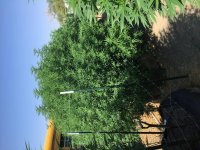Rodehazrd
Well-known member
The feed mix was for other members, sorry for the confusion!
That is a lot of Nitrogen. Get some plants into the mix and water them correctly and start with that. Maybe some small feeds to get things cycling. Watch the plant and see if a deficiency shows up, if not, water correctly and you will do well.
If you can get a fine ground bone meal you can make a liquid bone meal on your own. very fine 2-14-0 @ 670 grams to 1 gallon h20. Boil on the stove, let cool and strain. DTE uses a 20 mesh screen which is rather large. I use a 40 mesh screen on my homebrew liquid bone.
What about using bone char in that mix would It still need cooking?




